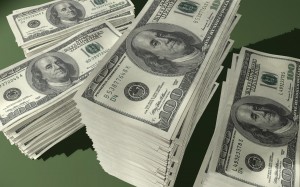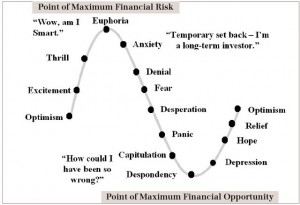Continuation of part 3
The problem with traditional cycle analysis is threefold. First, the use of 2-Dimensional price/time stock market charts to track the cycles. This book makes it clear that the stock market is a much more complex phenomena that moves in at least a 3-Dimensional environment. As such, when the stock market cycle analyst begin to use traditional cycle analysis on a two dimensional chart, they are nearly measuring the shadow of the overall cycle and not the cycle itself.
Second, the cycles are not static, they are dynamic. They are constantly rotating, adjusting and realigning themselves within the structure of the market. While it might sound complicated, it is not. It simply means that while the overall cycles remain intact, they constantly change their starting position to realign with the 3-Dimensional structure of the market. As various points of force occur in the market place, these cycles tend to realign themselves to confines of the lattice structure developing in the stock market at the time.
Finally, there are multiple cycles working in the stock market at any given time, ranging from hourly cycles to cycles lasting decades. An analyst performing cycle analysis must be aware of this fact and know which cycle is the predominant one during the period of study. Doing so would allow the analyst to setup a proper index composite that should mimic and predict the market in great detail. An illustration is a must to cement all 3 points.
Let’s take a look at the 2000 top, 2003 bottom and 2007 top. Let’s assume that during this time there were 10 different and major stock market cycles moving at the same time, and when combined, represent all major ups and downs of the market. The dates above are the major inflection points in the market. They represent the lattice completion points in the 3-Dimensional environment. That is precisely the points where the cycles realigned themselves in order to form the new cycle composite.
When the market hit the 2000 top, most cycles that worked prior to that period had stopped working. Instead the cycles realigned themselves at the 2000 top to build a completely new cycle composite going forward. These cycles represented the market between 2000 top and 2003 bottom. Further, these cycles realigned themselves again at the 2003 bottom and 2007 top. That is the primary reason behind why these cycles work for a period of time and then break down to never work again. Once the inflection points and the cycles are understood, an analyst simply realigns such cycles in a predictable fashion in order to time and predict the market with great precision.
Let’s study a sample market composite to gauge full understanding.
To be continued……
Did you enjoy this article? If so, please share our blog with your friends as we try to get traction. Gratitude!!!
Timing The Stock Market (Part 4)











